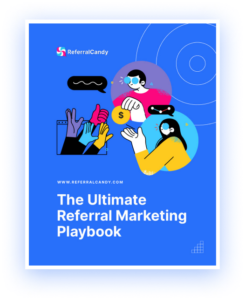Click to Jump
Many people think getting new customers is the only way to grow a business. While it’s true that new customers are good for your business, it’s certainly not the only (or most efficient) way to increase sales.
Bringing your existing customers back to your shop again and again is a lot less effort than what it takes to find new customers.
And it can significantly grow your business too.
In fact, 80% of Sephora’s incredible sales come from its 17 million loyalty members.
That’s the power behind a well-designed loyalty rewards program.
In this post, I’ll walk you through why loyalty rewards programs are important and how to tailor a loyalty reward program to your business. We’ll cover the seven types of customer loyalty programs, and show you examples of the most successful customer loyalty programs out there — and how surprisingly simple they are.
Let’s dive in.
What is Customer Loyalty?
Customer loyalty measures the likeliness a customer will do repeat business with your brand. This is largely dependent on customer satisfaction, customer experience, and the customer’s perceived value for money from the services or goods provided by your business.
Seems simple enough. So then, how do you leverage your customer’s positive experiences to encourage brand loyalty?
By rewarding them with a well-planned loyalty rewards program.
What is a Loyalty Rewards Program (and Why Does it Matter)?
Loyalty programs offer your customers rewards simply for being your customer.
The idea is to incentivize future purchases by rewarding each purchase with a point system or a gift card that can be used in your store. With these rewards, they are encouraged to return to your shop to make another purchase.
This boosts customer retention but also sales – as customers are inclined to spend more to gain higher rewards. The more that your customers benefit, the more your business benefits:
A win-win for you and your customers.
Do Loyalty Programs Increase Sales?
Yes! Loyalty programs can increase your sales and profits.
Consider these three stats about how loyalty rewards programs increase sales:
- 75% of consumers claim they are more likely to make further purchases with a brand after receiving an incentive.
- Customer loyalty programs can increase customer retention by 5 percent, which can boost profits by an impressive 25 to 95 percent for some businesses.
- Just by offering your customers a customer loyalty program, an eCommerce platform could potentially increase its average order quantity by a massive 319%.
One of the biggest fears that many business owners have about loyalty programs is that it will cost them more than they’ll earn.
Though a loyalty rewards program may have some upfront costs, it will ultimately increase sales and profits.
Plus, there are ways to choose a loyalty incentive that is low cost and set up the mechanisms of the loyalty program to ensure you end up with a net positive return on investment (ROI).
Which Customer Reward Incentives Are Best?
There are several options to choose from: a discount, a special offer, or some form of unique reward.
And this really depends on your business structure, with every brand being uniquely different. You’ll want to offer your customers more of what they love about your business.
A local coffee shop, for example, might offer an upgrade on their drink, or a branded travel mug. A massage spa might add on an extra 30 minutes after the 10th massage.
You want to choose a loyalty reward program incentive that builds your brand and delights your customers.
7 Different Types of Loyalty Rewards Programs
Whatever your business’s circumstance, a customer loyalty rewards program works best when using one of the 7 tried and tested loyalty rewards strategies.
1. The Points Program
A reward point system has a simple concept the more your existing customers spend, the more points they will earn.
These points can then be redeemed on future purchases for rewards, like discounts on purchases or free gifts.
Not only that, but customers can also accumulate points to redeem for bigger rewards. That can incentivize your customers to make several purchases in a row, in order to get the fancier reward – and that means they’re coming to your store more often.
By rewarding your customers with redeemable reward points, you’re encouraging customers to continue doing business with your brand into the future. And ultimately reducing the chance that they will switch to a competitor.
Some examples of brands using the Point Program are:
2. The Paid Program / The VIP Program
The paid customer rewards program involves inviting your customers to pay a one-time annual fee to join your brand’s VIP program, where they can access unique rewards or member-exclusive benefits.
This loyalty strategy is best pitched to your existing customers or repeat customer base. This is simply because new customers are less likely to join your program if they are yet to try your products or services.
By offering additional benefits, like major discounts or exclusivity on a new product, your customers will be encouraged to keep shopping with you all while paying for their membership too.
Some examples of brands using the Paid Program are:
3. The Charity Program
This type of loyalty program allows you to incorporate your brand’s vision and values into your marketing strategy by passing off the benefits and rewards of your loyalty program to your chosen charity. Though this doesn’t directly benefit your customers, it can help to build a stronger relationship between your business and your customers by partnering with charity programs they believe in.
In fact, if you can find values you both share, then customers are more likely to remain loyal to you.
Studies have shown that 50 percent of consumers worldwide are “belief-driven” buyers, with 57 percent of consumers claiming they would buy or boycott brands based on a business’s social or political positions.
This type of loyalty rewards program opens a very powerful opportunity to connect with your customer base on a deeper level, strengthening their trust with your brand.
Some examples of brands using the Charity Program are:
4. The Tier Program
The tiered loyalty reward program concentrates on levels of brand loyalty. In other words, the more your customers purchase from you, the higher the tier they move up into, and the better the rewards they can receive in return.
Tiered programs may also include points, where customers need to accumulate a number of points to move up into a higher tier. Common examples include airline frequent flyer miles and hotel stay programs.
In a way, a tiered program turns the shopping experience into a game, where the more they spend the higher levels they will reach and the better the rewards are likely to be.
It’s not just a fun way to reward your customers, either. In fact, game theory helps brands tap into the rewards center of the brain, making shopping with your brand an addictive experience.
Some examples of brands using the Tier Program are:
5. The Partner Program
A partner reward program, also known as a coalition program, is just as it sounds, partnering with a fellow retailer to provide an exclusive customer discount or special offer to both of your customer bases.
Rather than spending fresh cash on advertising and marketing to a new audience, many businesses choose instead to partner with other brands within the industry. Other brands working in the same niche as you will have a similar customer demographic, so partnering with them can expose you to a new customer base that you haven’t reached yet.
Whether this is through brand partnerships, influencer marketing, or an affiliate program is up to you. Either way, the idea is to offer incentives to potential customers outside of your reach.
Your business not only gains more affordable access to new customers but it also allows your customers to receive benefits for other brands they haven’t yet engaged with, making it an equally beneficial experience for them too.
Some examples of brands using the Partner Program are:
6. The Community Program
A community program incentivizes customer engagement through member exclusives and access to a like-minded community of people.
Within these community loyalty programs, loyalty members have the opportunity to connect with each other, see feedback from fellow members, and gain access to exclusive events and offers.
Don’t underestimate the power of your customers being fans; they could create powerful marketing content like unboxing videos or affiliate links that help grow your brand through word-of-mouth.
Some examples of brands using the Community Program are:
7. The Subscription Program
Subscription loyalty programs are similar to VIP or paid loyalty programs where the members join by paying a recurring fee, except that customers receive products instead of access/rewards.
In exchange for the monthly fee, loyalty members receive products on a regular and ongoing basis. These products are usually curated by the brand, are exclusive to the subscription, and cheaper and more convenient than purchasing one-off products.
A subscription loyalty program makes shopping with your brand fun, easy and automatic.
Some examples of brands using the Subscription Program are:
7 Best Loyalty Rewards Programs
So what does a customer loyalty program look like when it’s done right?
Let’s take a look at these seven examples of loyalty rewards programs.
1. Sephora (Points / Tier Program)
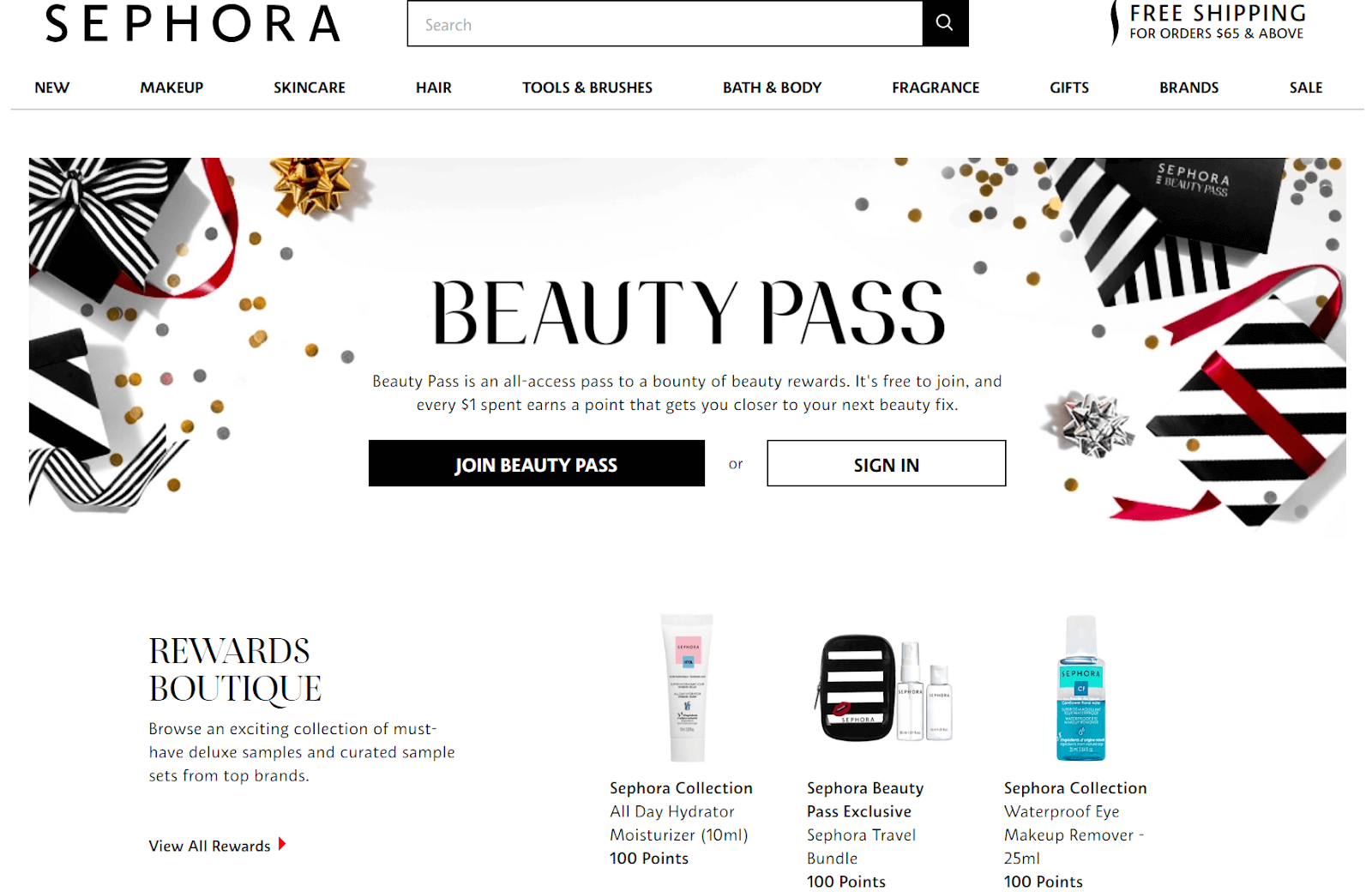
Sephora’s customer rewards program Beauty Pass (or Beauty Insider in North America) has been widely successful. The program now has upwards of 17 million loyalty members, making up a massive 80% of Sephora’s annual sales.
With Sephora’s Beauty Pass, their customers earn rewards for each purchase they make based on a simple points system. Sephora’s loyalty members can then choose to spend the earned points at their own discretion.
Whether they choose to spend them on gift cards, discounts, or more exclusive items like limited edition products or in-store beauty tutorials, that’s completely up to them. Sephora also offers Beauty Pass members early access to their seasonal sale — really making valued members feel like VIPs.
Giving their loyalty members the flexibility to choose makes Sephora’s customer reward program a very attractive proposition to both return and prospective customers.
2. REI (Paid Program)
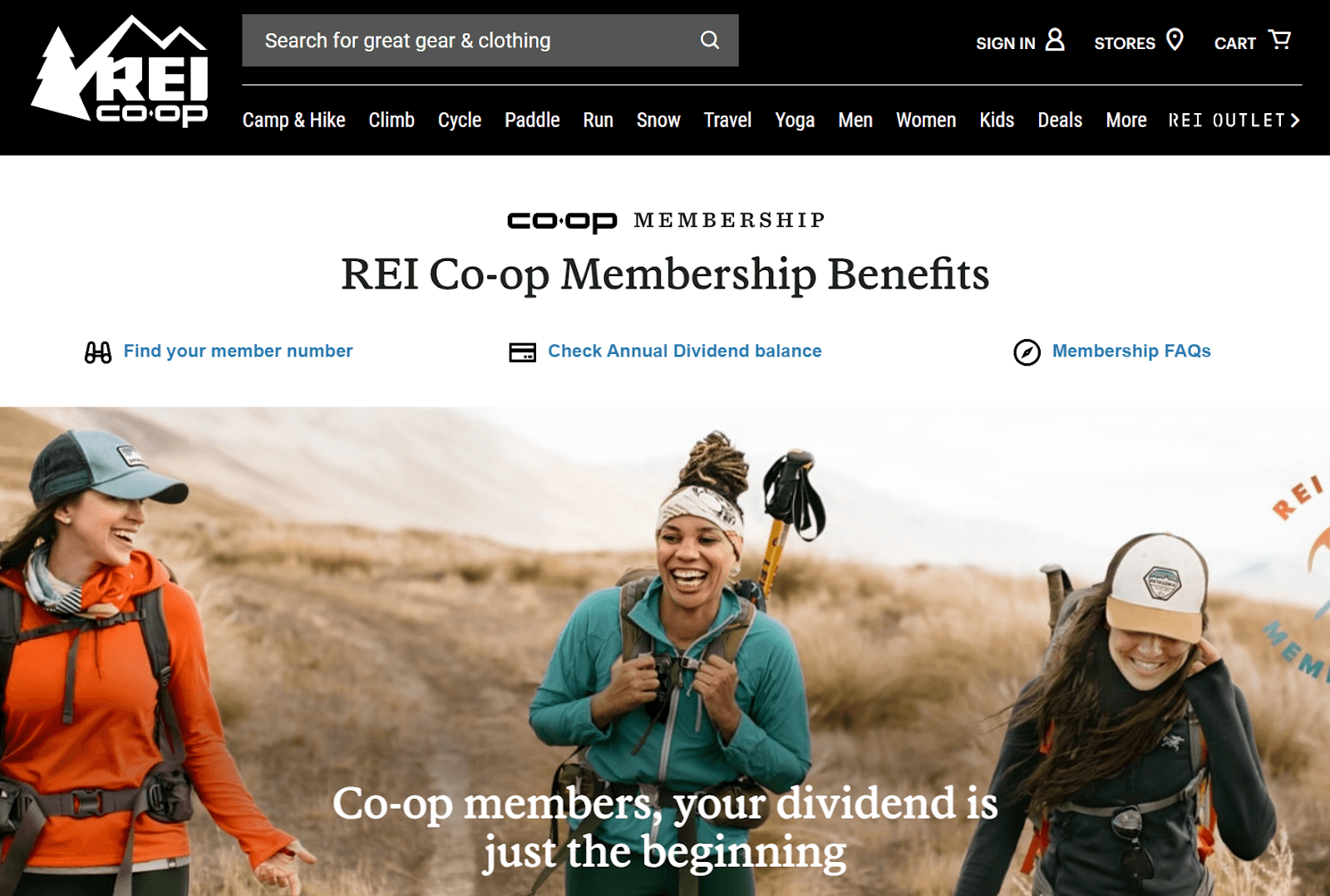
REI’s Co-op customer loyalty program emboldens its customers to see the brand as a consumer organization, a company that gives back to its loyalty members. It is a belief at the root of REI’s brand values.
Co-op members can buy their lifetime membership for just $20.
A small price to pay as co-op members are then rewarded with access to massively discounted items, given 10 percent of the total purchase amount, and receive member-only special offers.
The program has been so successful it is now the largest consumer co-operative enterprise in the U.S.
3. The Body Shop (Charity Program + VIP/Tiered Program)
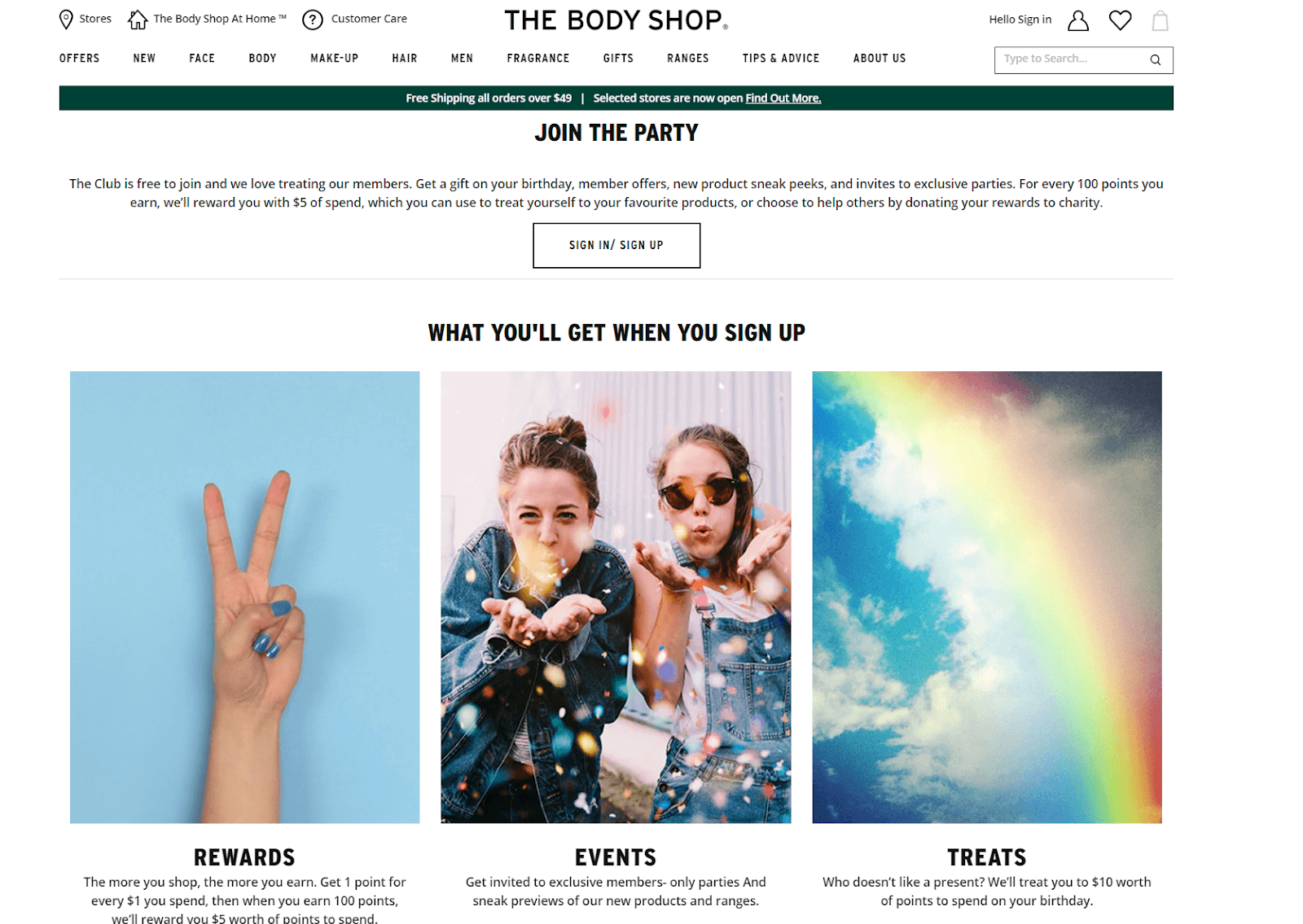
Not all loyalty programs are based wholly and solely around member discounts.
The Body Shop demonstrates this perfectly.
Its customer rewards program, on top of rewarding its loyalty members with VIP benefits, is structured around mutual values it shares with its customers.
They give their members the opportunity to donate earned rewards to Born Free USA, an animal welfare charity.
This type of customer rewards program creates a deeper connection with members, creating brand loyalty, and strengthened customer relations.
4. Hyatt (Tier Program)
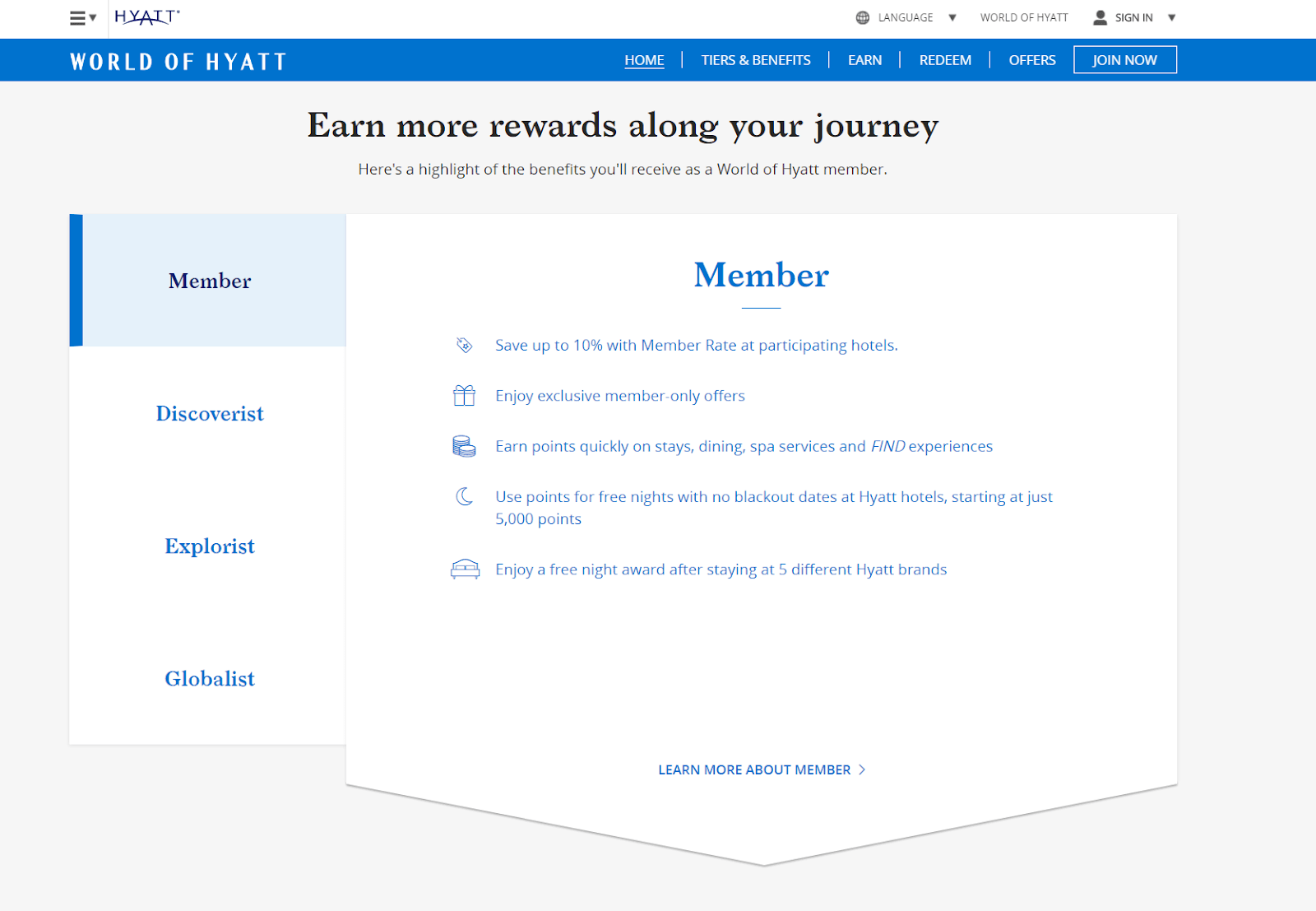
Hyatt’s loyalty rewards program leverages a five-tiered points system, rewarding loyalty members by offering them member-only perks.
These perks include access to members-only offers and discounts for staying at participating hotels. The program also allows members to earn further points by using hotel services such as dining out in their restaurant, using the hotel’s spa, or enjoying a gym class.
The more that their customers enjoy the perks of being a member, the more likely they will return again and again to enjoy those perks.
And the more the return, the higher they climb in the tier program, making it a never-ending loop of customer retention and satisfaction.
5. Nectar and eBay (Partner Program)
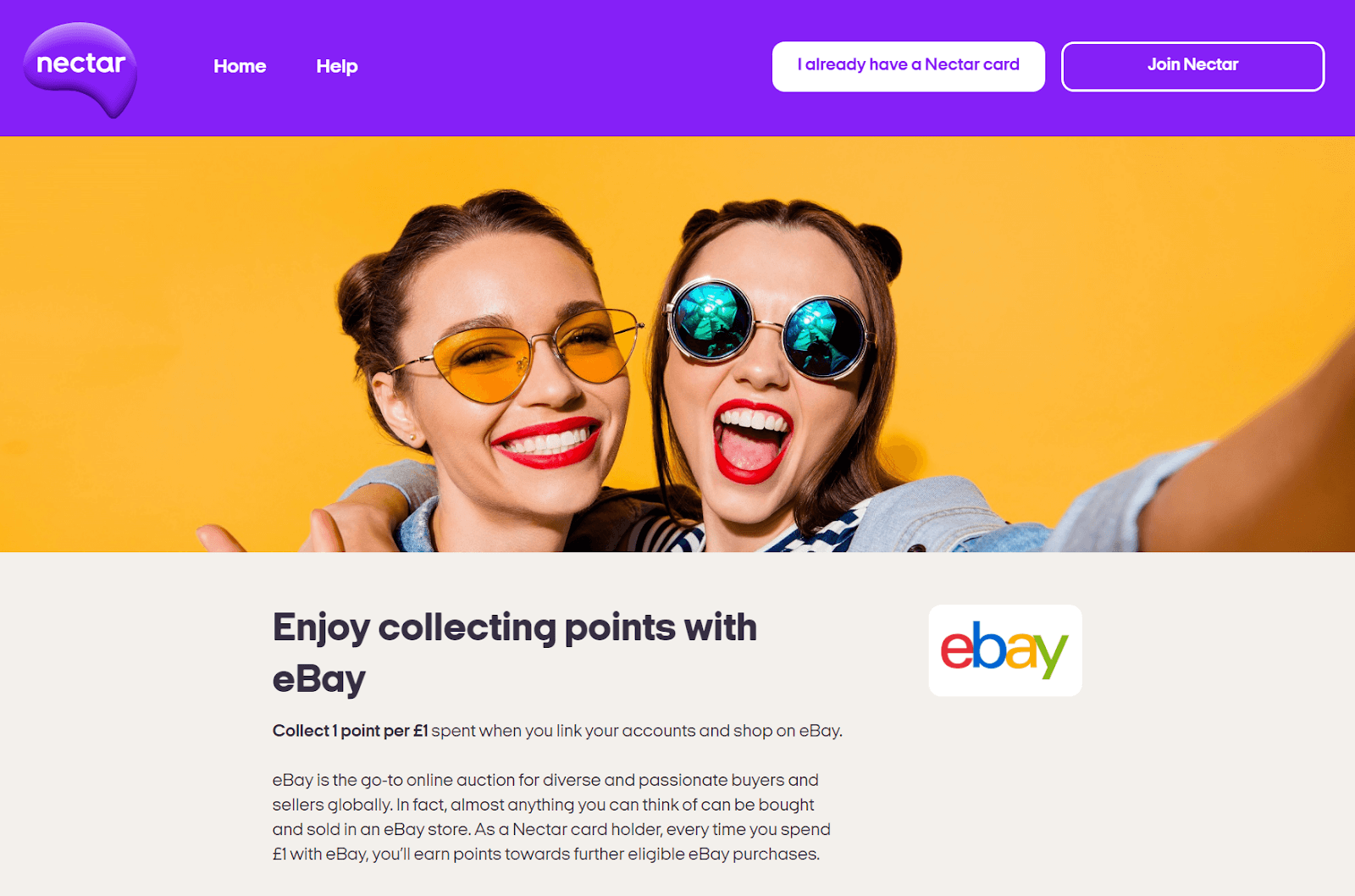
The UK-based company Nectar is a shining example of partnership rewards programs done right, with over 19 million users enrolled in the loyalty rewards program.
The coalition program between Nectar and eBay, for example, is one of the most successful partnerships today. Simply by enrolling with Nectar, users can both earn rewards when they shop on eBay and then apply them to their purchases.
The loyalty program rewards customers with 1 reward point for every £1 spent with eBay which can then be spent on over 50 million eBay items.
And Nectar has partnerships with 16 other companies, too. So any Nectar points earned can be spent with any of Nectar’s collaborative partners.
This added flexibility to redeem points with many different companies makes Nectar’s customer rewards program a very attractive one to their loyalty members.
6. Tarte (Community Program)
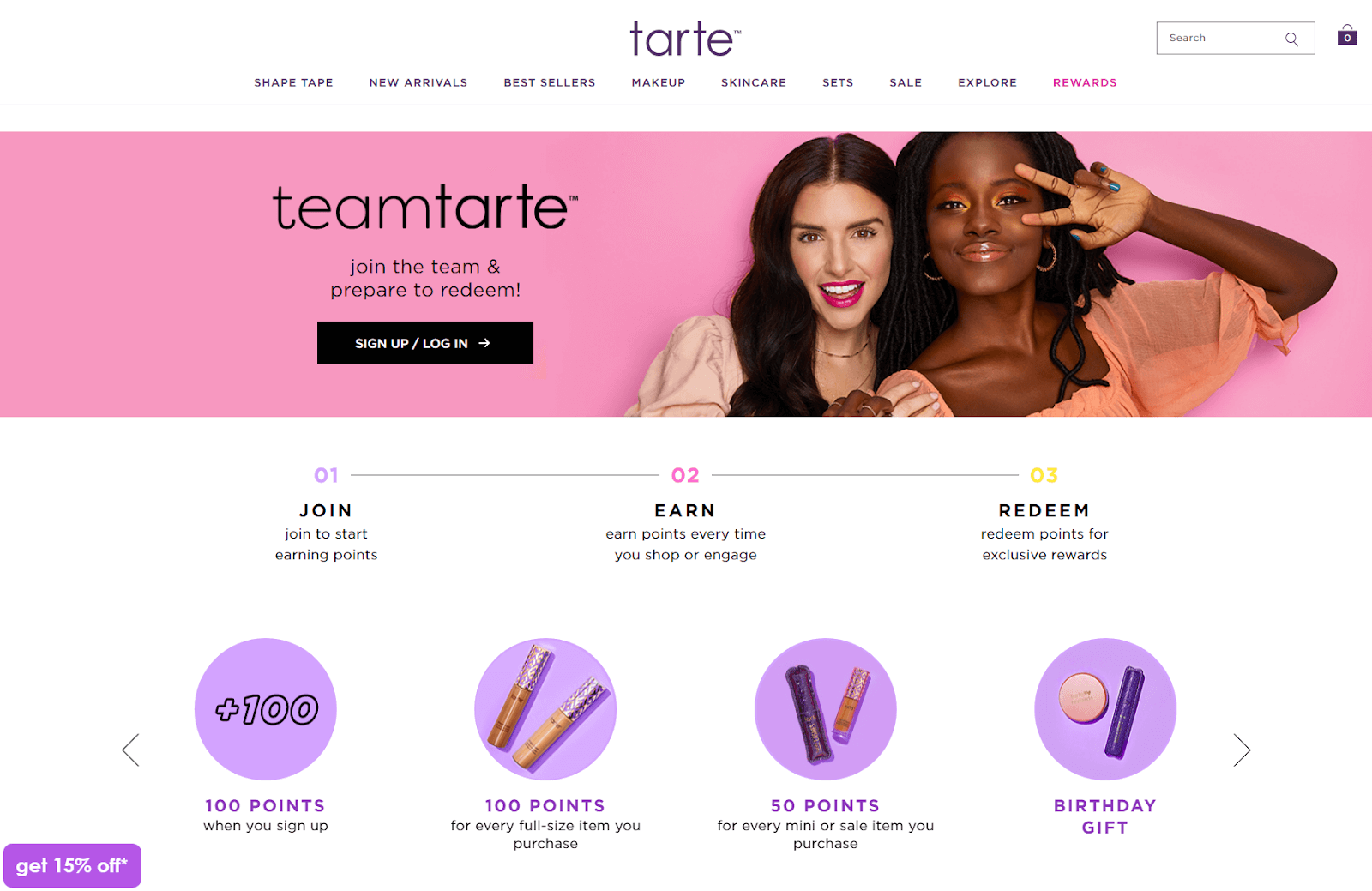
In the beauty industry, retailers are leveraging social media to spread brand awareness. There’s no better way to do this than to encourage social media engagement through user-generated content. Tarte’s rewards point system not only rewards its customers with great discounts but it also grants them access to a community of like-minded members.
Tarte incentivizes user-generated content, like video makeup tutorials, selfies, and online reviews, by rewarding engagement with rewards points that can then be spent on the brand’s beauty products.
Tarte’s customer rewards program demonstrates how programs don’t necessarily have to be limited to simply encouraging spending. If structured correctly, a customer rewards program can also leverage customer-generated advertisements as well.
7. Amazon Prime (Subscription Program)
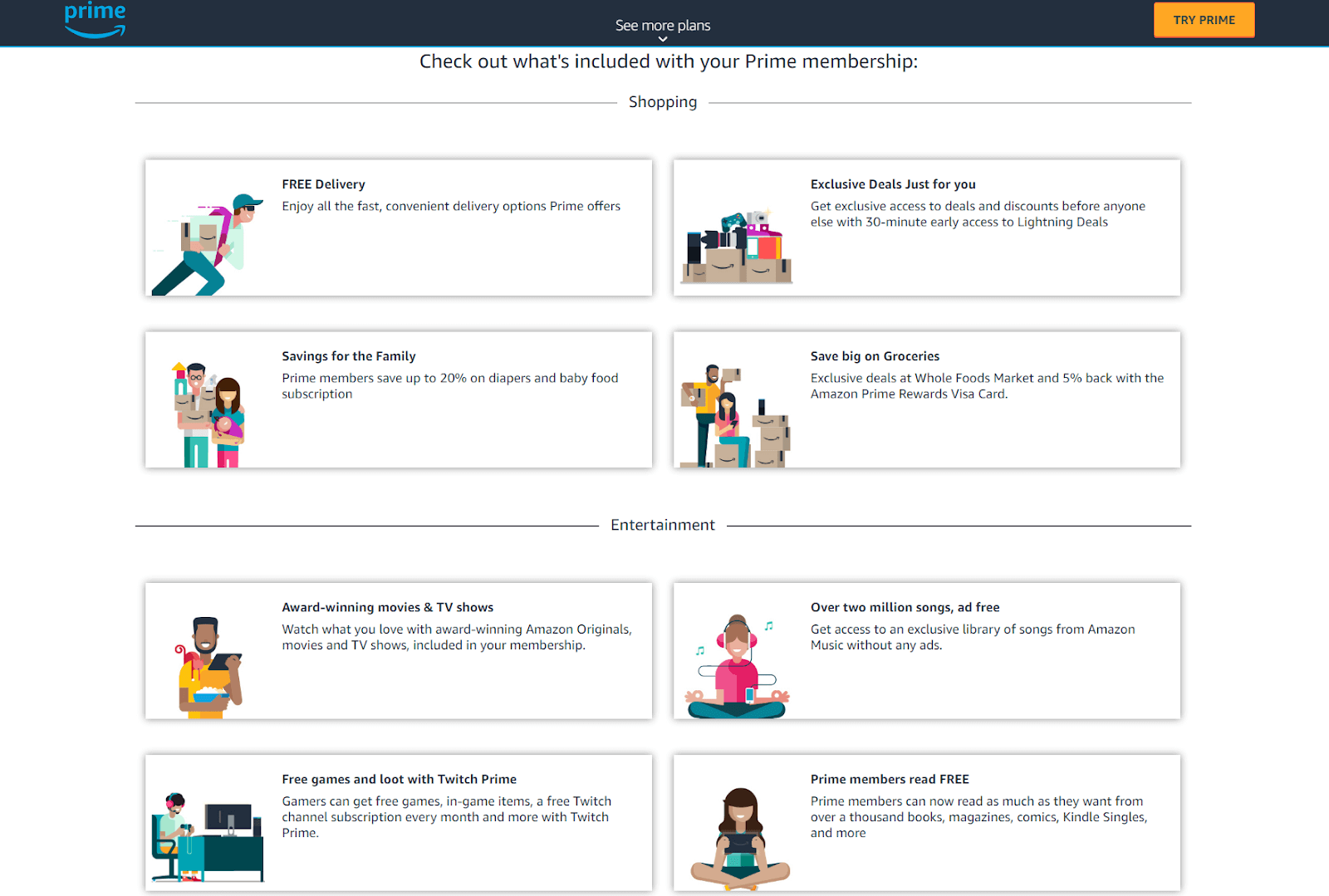
Amazon’s Prime membership program is probably one of the most well-known subscription-based customer loyalty programs out there.
For a recurring monthly fee, Prime members can access unlimited free shipping on millions of products. Members can also unlock many other perks including Prime’s media streaming services.
Customers are happy to pay an upfront cost if it means accessing exclusive offers they deem worth the money. This upfront investment also encourages customers to validate the recurring expense by spending more with Amazon or your brand.
Final Thoughts
Your business can integrate a successful customer loyalty program into your brand’s marketing approach. This will bolster your brand’s exposure, customer retention, and, most importantly, sales.
Using the above examples as inspiration, start determining which customer loyalty strategies are best for your brand. Begin tapping into a whole new profitable section of your existing customer base.


